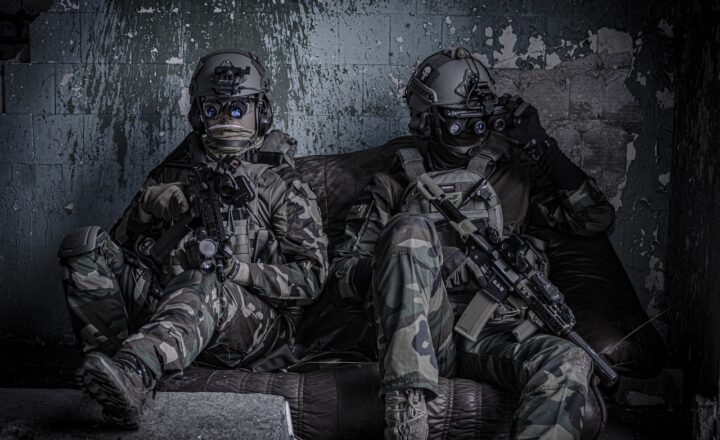Why the Development of Stealth Technology is a Game-Changer in Aerial Combat
November 16, 2024

Stealth technology has revolutionized aerial combat, giving nations that possess it a significant strategic advantage over their adversaries. While traditional aircraft rely on speed and firepower, stealth technology enables them to evade detection and engagement by enemy radar systems. In this article, we will delve into how this groundbreaking technology has transformed military aviation, the key principles behind stealth design, its impact on combat strategies, and the future of aerial warfare in an era dominated by advanced stealth capabilities.
1. The Evolution of Stealth Technology
The pursuit of invisibility on the battlefield can be traced back decades, with early efforts focused on reducing radar cross-section (RCS) through various means. However, the real breakthrough came during the Cold War, culminating in the development of the Lockheed F-117 Nighthawk, the first operational stealth aircraft, which took to the skies in 1981. Here’s a brief timeline of the development of stealth technology:
- 1960s: Research begins on radar-absorbing materials and airframe shapes that minimize radar reflections.
- 1970: The U.S. military initiates a secret program to develop a stealth aircraft, known as the Have Blue project.
- 1981: F-117 Nighthawk enters service, showcasing the effectiveness of stealth technology in the Gulf War.
- 1990s: Development of the B-2 Spirit bomber enhances long-range stealth capabilities.
- 2000s-Present: Advances in computational fluid dynamics, radar-absorbent materials, and active electronic warfare drive the next generation of stealth aircraft like the F-22 Raptor and F-35 Lightning II.
This evolution has dramatically changed the landscape of aerial combat, ushering in new tactics and strategies that focus on stealth over brute force.
2. Key Principles Behind Stealth Design
Stealth technology does not rely solely on one aspect; instead, it encompasses multiple strategies that work together to minimize an aircraft’s detectability. The three primary principles of stealth design include:
2.1. Shaping
Aircraft are designed with distinct shapes and surfaces to deflect and scatter radar waves. This design incorporates angular surfaces that break up radar signals, effectively reducing the RCS. Innovative shapes, such as the flying wing design of the B-2 bomber, enhance stealth capabilities.
2.2. Radar-Absorbent Materials (RAM)
The use of specialized materials that absorb radar energy is critical in stealth technology. RAM is applied to the aircraft surface and helps reduce radar reflections. This technology constantly evolves to enhance absorption efficiency and withstand various environmental conditions.
2.3. Reduced Infrared Signature
Minimizing an aircraft’s infrared (IR) signature is another critical aspect of stealth. Advanced cooling systems and engine designs help reduce heat emissions, making it difficult for infrared sensors, commonly used in missile targeting, to lock onto the aircraft.
These principles collectively create an aircraft that can operate within contested airspaces without being easily detected or engaged.
3. Strategic Advantages of Stealth Technology
The implementation of stealth technology has provided military forces with several strategic advantages in aerial combat:
3.1. Surprise Attacks
Stealth aircraft can penetrate enemy airspace undetected, allowing them to perform surprise attacks on high-value targets. This enhances mission success rates and keeps adversaries off-balance, unable to effectively counter these operations.
3.2. Enhanced Targeting Capabilities
The ability to evade enemy radar allows stealth aircraft to operate closer to enemy assets without being detected. This proximity improves targeting accuracy and extends the range of their weapon systems, increasing the effectiveness of airstrikes.
3.3. Deterrence
Possessing advanced stealth capabilities can deter potential adversaries from aggressive actions, as the threat of being targeted by stealth aircraft poses a significant challenge to traditional air defenses. This strategic stability can lead to changed behavior in geopolitical contexts.
4. Challenges and Countermeasures
While stealth technology has significantly altered the dynamics of aerial combat, it is not without challenges and countermeasures. As the technology has advanced, so too have the means to detect and counter it:
4.1. Advanced Radar Systems
Countries are investing in advanced radar systems capable of detecting stealth aircraft. These include low-frequency radars that can detect the otherwise minimized radar cross-sections of stealth designs. As detection systems improve, the arms race between stealth technology and counter-radar measures remains an ongoing battle.
4.2. Networking and Intelligence Sharing
In a modern warfare environment, data sharing and networked sensor systems allow forces to track and engage stealth aircraft more effectively. The integration of satellite imagery, ground-based radar, and airborne sensors creates a multi-faceted detection network, complicating stealth’s advantage.
4.3. Cyber Warfare and Electronic Countermeasures
As technology advances, so does the reliance on electronic systems for stealth operations. Cyber warfare and electronic countermeasures can disrupt communications and targeting systems, potentially compromising the effectiveness of stealth missions.
The evolution of countermeasures poses significant challenges to stealth technology as military strategists adapt to this new landscape.
5. The Future of Aerial Warfare
Looking ahead, the impact of stealth technology on aerial combat will likely continue to evolve:
5.1. Integration with Unmanned Aerial Vehicles (UAVs)
As UAV technology advances, the integration of stealth features into drones offers a novel approach to aerial combat. Unmanned systems can perform high-risk missions without putting pilots in danger, further capitalizing on the advantages offered by stealth technology.
5.2. Advanced AI and Autonomous Systems<
Artificial intelligence is poised to play a significant role in future aerial combat. Integrating AI with stealth technology can enhance decision-making capabilities, allowing aircraft to adapt in real-time to dynamic combat situations, increasing overall effectiveness in missions.
5.3. Continuously Evolving Tactics
As adversaries adapt to counter stealth capabilities, future combat strategies will necessitate the continual evolution of tactical approaches. Military forces will need to develop innovative tactics that blend stealth with conventional warfare to maintain a competitive edge.
Conclusion
In conclusion, the development of stealth technology has undeniably changed the paradigm of aerial combat. Providing significant tactical advantages, from surprise attacks to enhanced targeting and deterrence, stealth capabilities will continue to shape military strategies on the modern battlefield. As countermeasures evolve, the cycle between stealth innovations and detection technologies will likely remain at the forefront of military development efforts. In this high-stakes environment, nations must continuously refine their approaches to maintain dominance in the skies, ensuring they stay ahead of the curve in the evolving landscape of aerial warfare.








